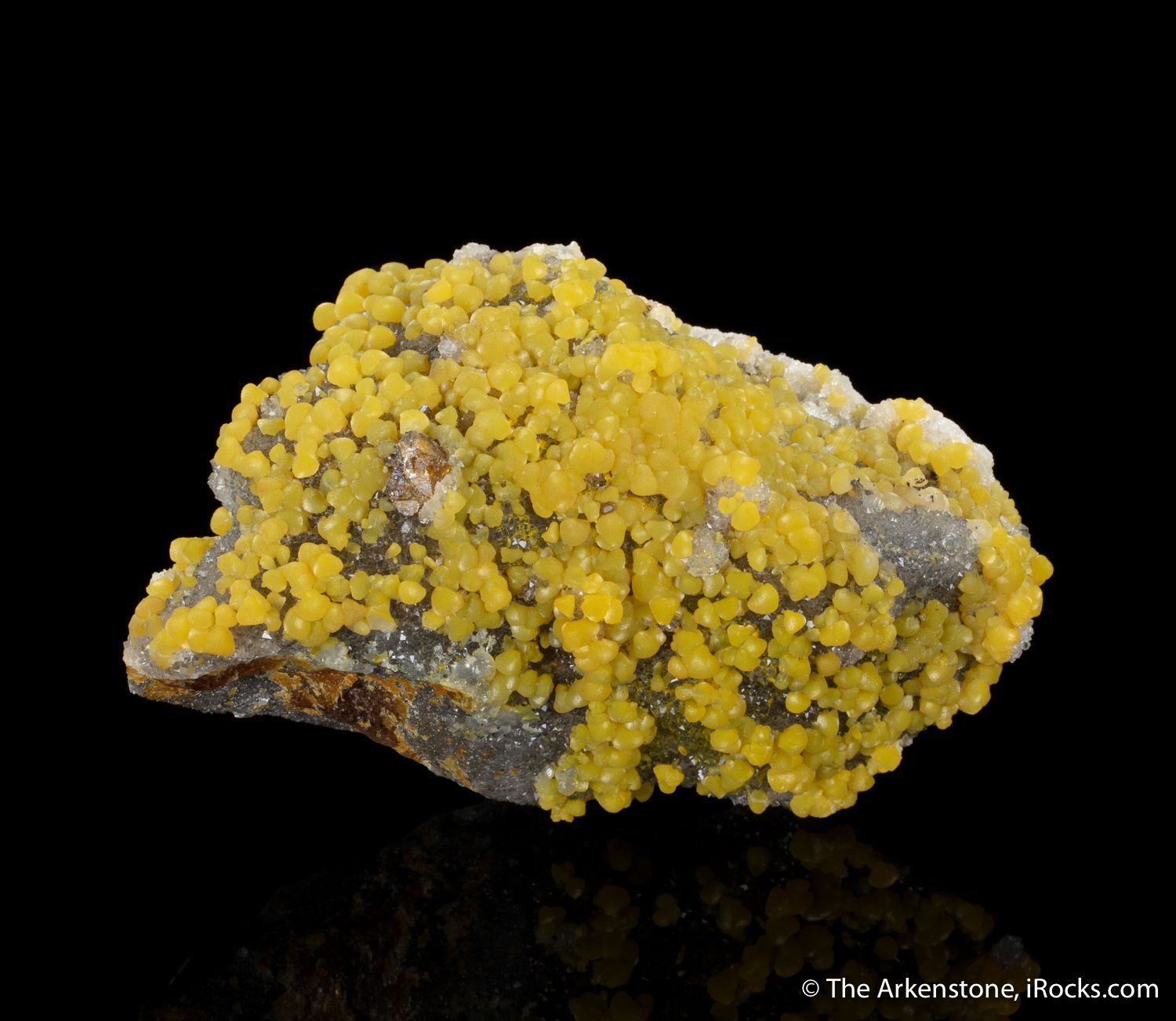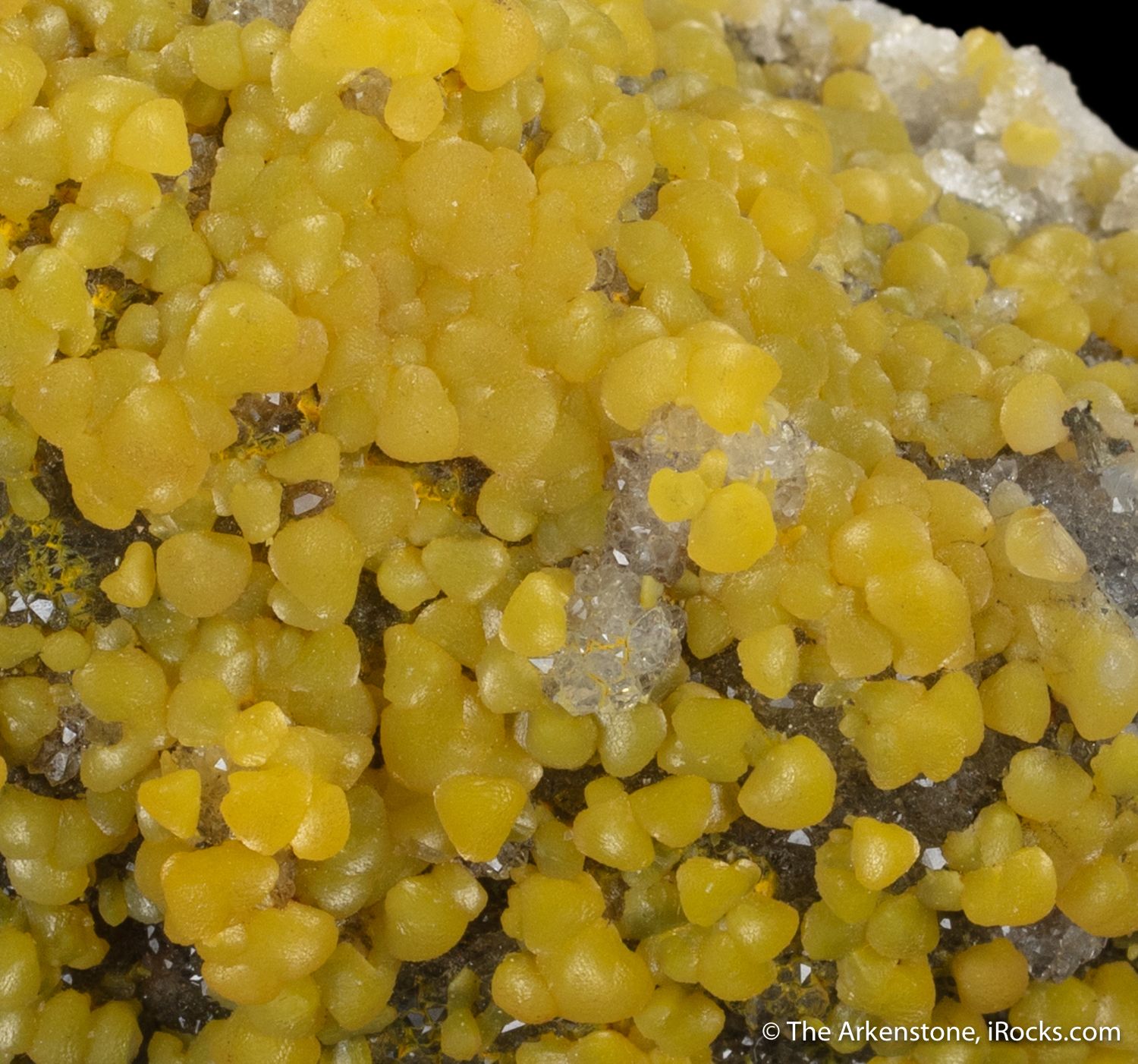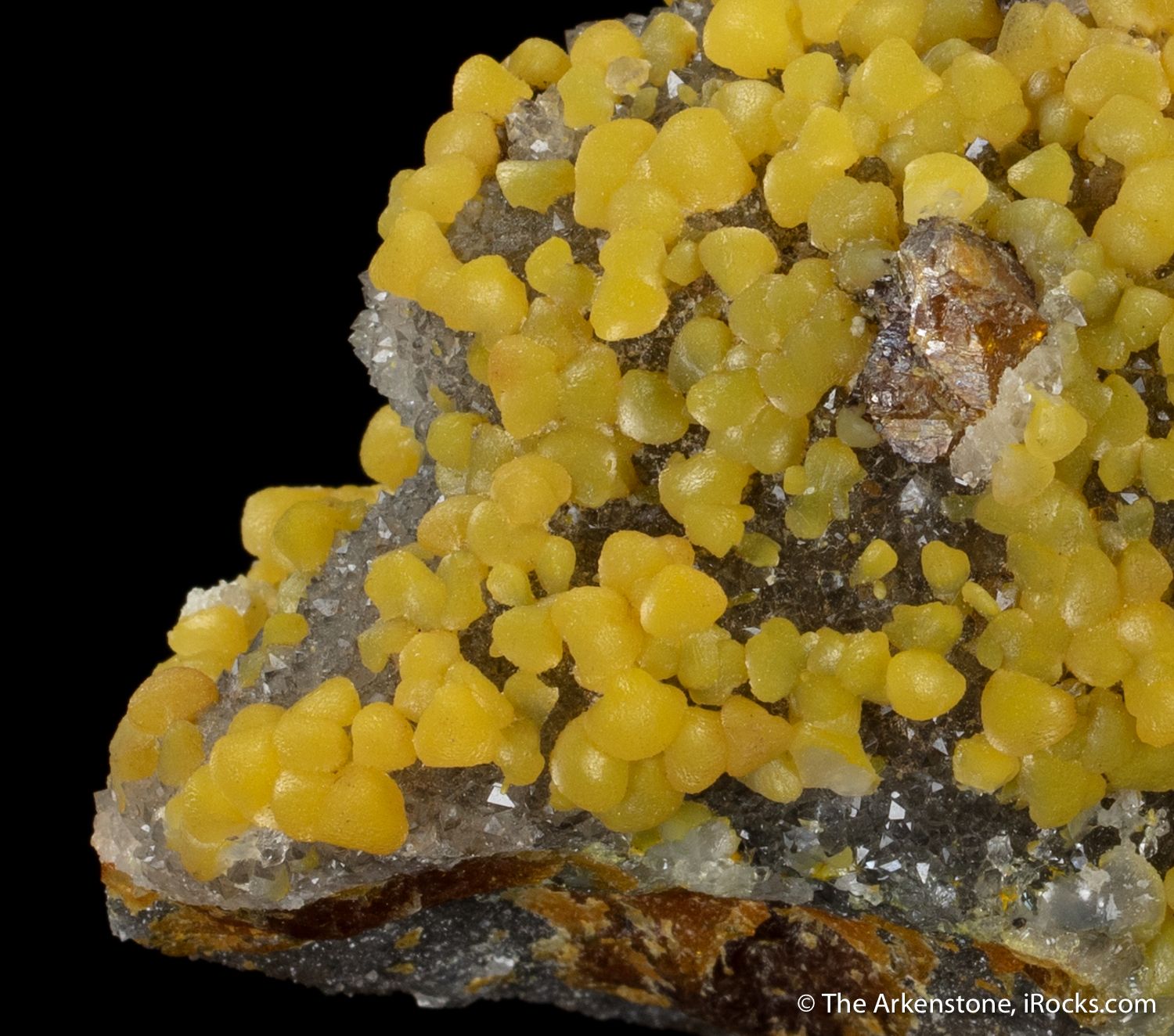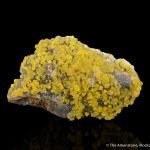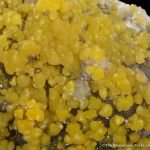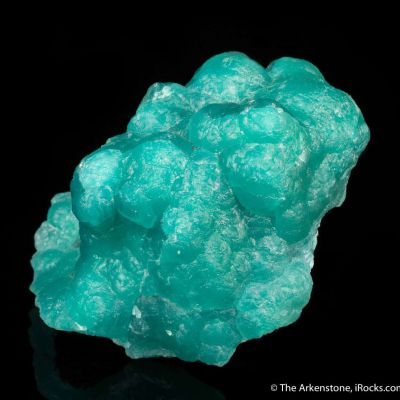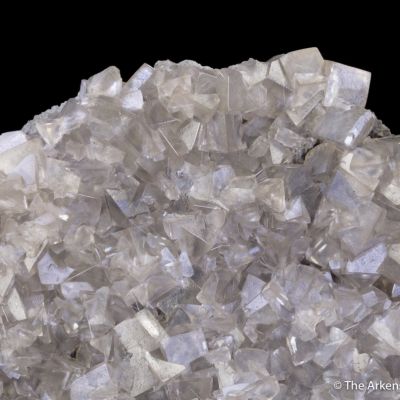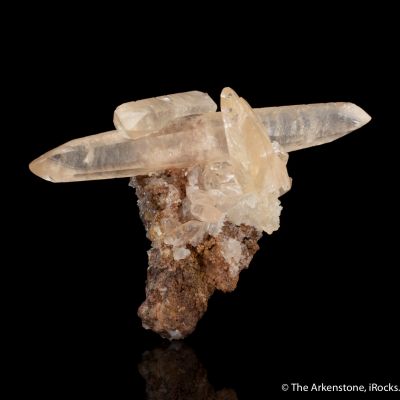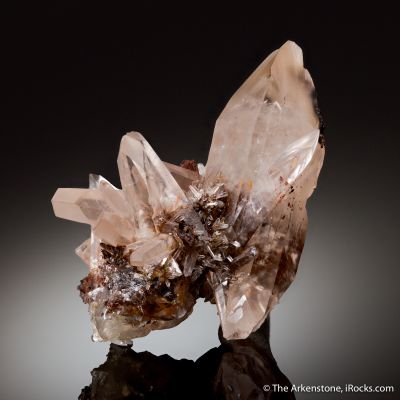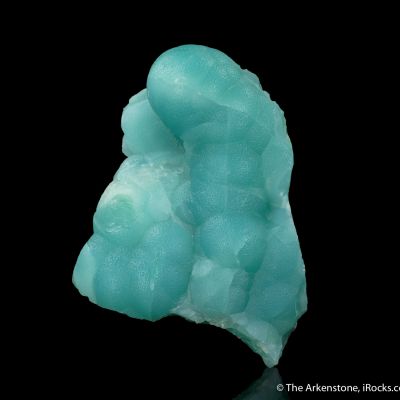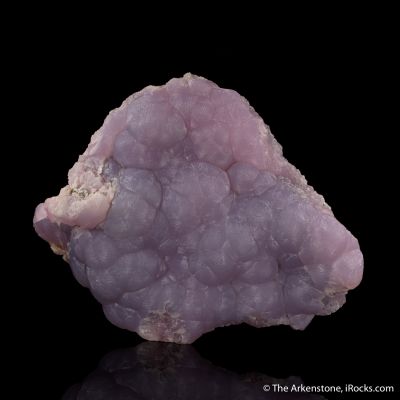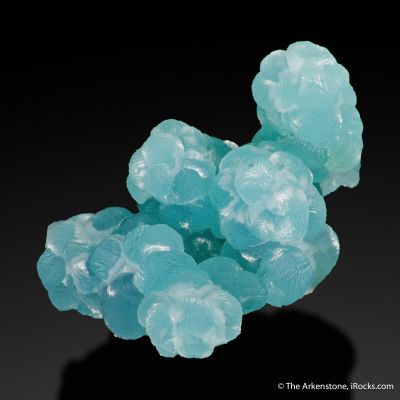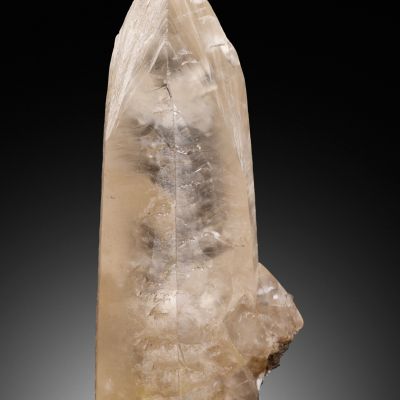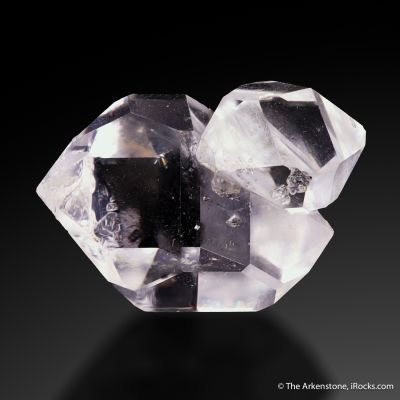- SM21-038
- Greenockite included Smithsonite with Sphalerite on Quartz
- Monte Cristo Mine, Rush, Marion Co., Arkansas, USA
- Small Cabinet, 9.0 x 5.5 x 3.4 cm
- Ex. Henry De Linde
- SOLD
Numerous, intense yellow, rice-grain-like crystals of Smithsonite are heavily sprinkled on a sparkling druse of tiny clear Quartz crystals on this old-time piece from the Monte Cristo Mine in Arkansas. This is one of the most rare of all the several styles of smithsonite which came out of here, primarily in the 1950s-1980s. It is the best example of this style that we obtained in the deLinde collection purchase in 2018. This mine, along with a few others in the district, produced a moderate amount of Smithsonite ore in the late 1800s and early 1900s during the heyday of operations here. This attractive piece features translucent, yellow Smithsonite in which the color is produced undoubtedly by trace cadmium substitution for zinc in the structure as well as included Greenockite, a rare cadmium sulfide. The underlying Quartz druse scintillates in any incident light. One brown-orange, 7 mm Sphalerite is on the left side of the piece and has a few Smithsonite crystals associated with it. There are a couple of large, subhedral, similarly colored Sphalerite crystals embedded in the matrix at the front as well. Given the brown-orange color, these are probably cadmium-bearing as well. From the collection of Henry de Linde (March 21, 1923 – April 4, 2019) of Hot Springs, Arkansas. Henry was one of the most prominent figures in the history of Arkansas mining and mineral collecting. Along with being a miner, mineral collector and an amateur mineralogist, de Linde was one of the founders of the Coon Creek Association mineral club. He was the owner of several key localities in Arkansas including the Diamond Jo Quarry (on the south rim of Magnet Cove), the type locality for Delindeite, which was named in his honor in 1987. He collected this specimen circa 1967 per his label.
